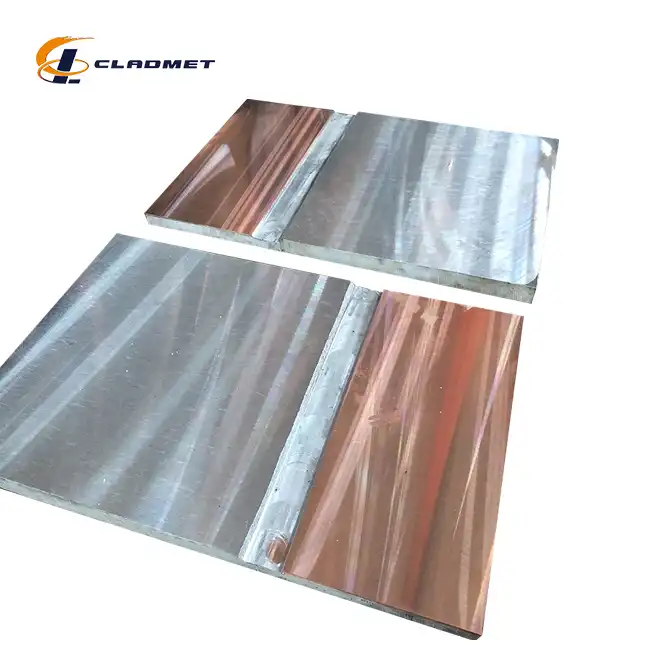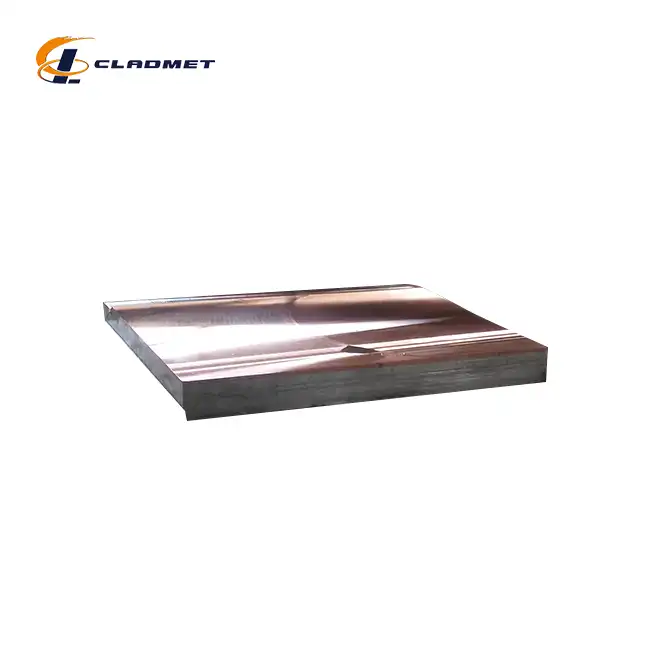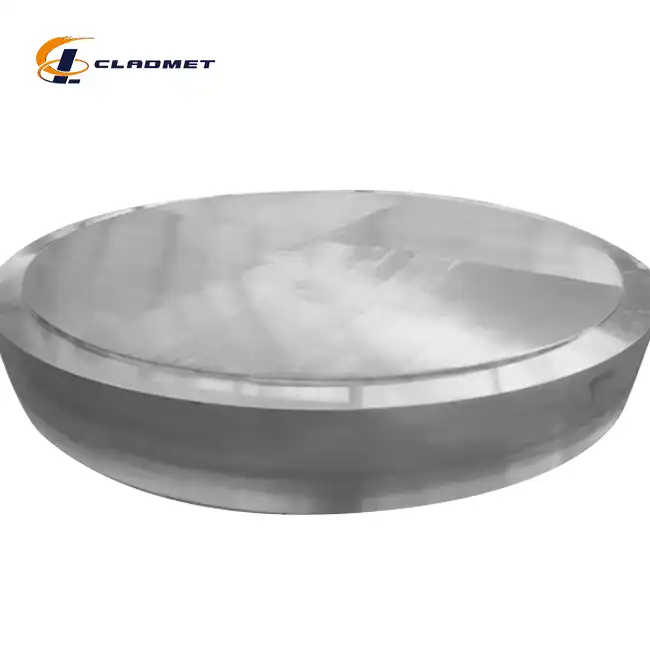Why Is Explosive Bonding a Game-Changer in the Manufacturing of Clad Steel Sheets?
 2025-07-28 16:53:09
View:389
2025-07-28 16:53:09
View:389In the rapidly evolving landscape of industrial manufacturing, explosive bonding has emerged as a revolutionary technique that fundamentally transforms how clad steel sheets are produced. This advanced metallurgical process represents a paradigm shift from traditional bonding methods, offering unprecedented strength, durability, and versatility in composite material manufacturing. Explosive bonding utilizes controlled detonation forces to create metallurgical bonds between dissimilar metals at the molecular level, resulting in clad steel sheets that exhibit superior mechanical properties and exceptional resistance to harsh environmental conditions. The technique's ability to join materials that are otherwise incompatible through conventional welding or rolling processes has made it an indispensable tool in industries ranging from petrochemical processing to aerospace engineering, where material reliability is paramount.
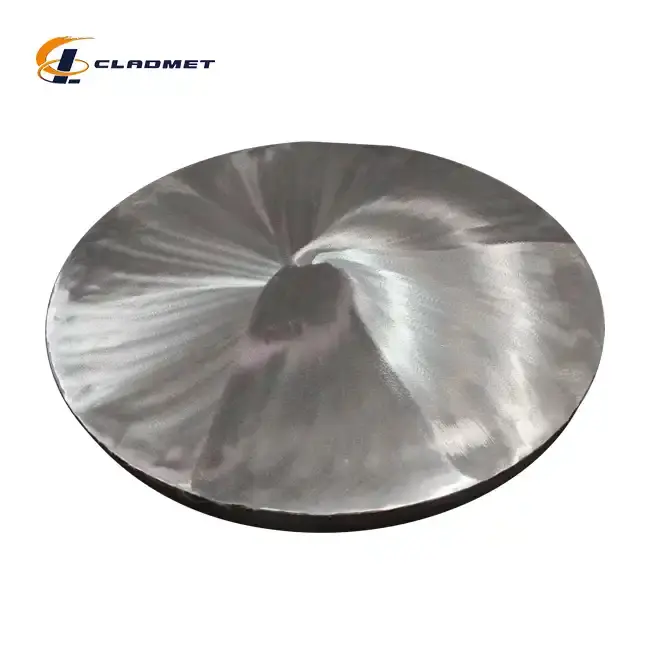
Revolutionary Manufacturing Process That Transforms Material Properties
Controlled Detonation Technology Creates Unprecedented Bond Strength
The foundation of explosive bonding lies in its ability to harness controlled explosive forces to achieve what traditional manufacturing methods cannot accomplish. When producing clad steel sheets through explosive bonding, the process begins with meticulous preparation where the base steel substrate and cladding material are positioned with precise alignment and standoff distances. The explosive charge, typically composed of specialized industrial explosives, is strategically placed to ensure uniform energy distribution across the entire bonding surface. Upon detonation, the explosive force accelerates the cladding material toward the base steel at velocities exceeding 300 meters per second, creating collision pressures that can reach several gigapascals. This extreme pressure and velocity combination forces the materials into intimate contact at the atomic level, eliminating surface contaminants and oxide layers that would otherwise prevent proper bonding. The resulting clad steel sheets exhibit bond strengths that consistently exceed 140 MPa, with shear strengths reaching 105 MPa or higher, making them suitable for the most demanding industrial applications where material failure is not an option.
Molecular-Level Fusion Eliminates Traditional Bonding Limitations
Traditional manufacturing methods for clad steel sheets often rely on thermal processes or mechanical pressure, both of which have inherent limitations in terms of material compatibility and bond quality. Explosive bonding transcends these limitations by creating a unique wavy interface pattern at the molecular level, where the materials become permanently fused through plastic deformation rather than melting. This process occurs so rapidly that heat-affected zones are minimized, preserving the original metallurgical properties of both the base steel and cladding materials. The wavy interface pattern, characterized by its distinctive serpentine appearance when viewed under microscopic examination, provides exceptional mechanical interlocking that prevents delamination even under extreme stress conditions. For clad steel sheets manufactured through explosive bonding, this molecular-level fusion ensures that the composite material behaves as a single, homogeneous unit rather than two separate layers merely adhered together. The absence of thermal input during the bonding process also eliminates concerns about thermal stress, warping, or changes in material properties that commonly occur with fusion welding techniques.
Superior Quality Control Through Precise Process Parameters
The explosive bonding process for clad steel sheets demands exceptional precision in controlling multiple variables simultaneously, including explosive charge density, standoff distance, collision angle, and detonation velocity. Modern explosive bonding facilities employ sophisticated monitoring systems that track these parameters in real-time, ensuring consistent quality across production runs. The process begins with comprehensive material preparation, where both the base steel and cladding materials undergo rigorous cleaning and surface treatment to remove any contaminants that could compromise bond integrity. Surface roughness is carefully controlled to optimize the collision dynamics, while material thickness ratios are calculated to ensure proper energy transfer during detonation. Quality control measures include pre-bonding inspection of material surfaces, precise measurement of explosive charge distribution, and post-bonding testing of bond strength through destructive and non-destructive testing methods. Advanced ultrasonic testing techniques can detect any potential defects or unbonded areas within the clad steel sheets, ensuring that only products meeting the highest quality standards proceed to final processing. This comprehensive quality control approach has enabled manufacturers like Baoji JL Clad Metals Materials Co., Ltd. to achieve ISO9001-2000 certification and successfully pass PED and ABS international qualifications, demonstrating the reliability and consistency of explosively bonded clad steel sheets.
Enhanced Performance Characteristics That Exceed Industry Standards
Exceptional Corrosion Resistance for Harsh Environmental Applications
The superior corrosion resistance achieved through explosive bonding represents one of the most significant advantages of this manufacturing technique for clad steel sheets. Unlike traditional coating methods that may develop pinholes or discontinuities over time, explosive bonding creates a continuous, impermeable barrier that completely isolates the base steel from corrosive environments. The cladding materials used in explosive bonding, such as stainless steel, titanium, or specialized nickel alloys, are selected specifically for their exceptional resistance to various forms of corrosion, including general corrosion, pitting, crevice corrosion, and stress corrosion cracking. When these materials are explosively bonded to carbon steel or low-alloy steel substrates, the resulting clad steel sheets combine the structural strength of the base material with the corrosion resistance of the cladding layer. This combination is particularly valuable in industries such as chemical processing, marine engineering, and offshore oil and gas operations, where exposure to aggressive chemicals, saltwater, and extreme temperatures would rapidly degrade conventional materials. The molecular-level bonding achieved through explosive processes ensures that the protective cladding layer maintains its integrity even under mechanical stress, thermal cycling, and chemical attack, providing long-term protection that significantly extends equipment service life.
Superior Mechanical Properties Under Extreme Operating Conditions
The mechanical properties of explosively bonded clad steel sheets far exceed those achievable through conventional manufacturing methods, making them ideal for applications where material performance is critical. The unique bonding mechanism creates a composite material that exhibits the combined strengths of both constituent materials while minimizing their individual weaknesses. The base steel provides structural integrity and load-bearing capacity, while the cladding layer contributes specialized properties such as wear resistance, fatigue resistance, and environmental protection. Under tensile loading, the wavy interface pattern created during explosive bonding acts as a mechanical interlock that prevents delamination and distributes stress more effectively than flat interfaces. This stress distribution mechanism allows clad steel sheets to withstand extreme operating conditions, including high-pressure applications, thermal shock, and dynamic loading scenarios. The absence of heat-affected zones in explosive bonding also preserves the original grain structure and mechanical properties of both materials, ensuring that the composite maintains its strength characteristics throughout its service life. Testing has consistently shown that explosively bonded clad steel sheets can withstand pressures exceeding those required for most industrial applications, with safety factors that provide confidence in critical applications such as pressure vessels, heat exchangers, and structural components in nuclear facilities.
Customizable Material Combinations for Specialized Applications
The versatility of explosive bonding enables the creation of clad steel sheets with virtually unlimited material combinations, allowing manufacturers to tailor properties to specific application requirements. This customization capability extends beyond simple material selection to include precise control over thickness ratios, surface treatments, and post-bonding processing options. For instance, clad steel sheets can be manufactured with base materials ranging from standard carbon steel grades like Q235B and Q345B to high-strength low-alloy steels such as A516 Gr.70, depending on the required structural performance. The cladding materials can be selected from a wide range of options, including various stainless steel grades, titanium alloys, copper, aluminum, and exotic materials like tantalum or zirconium for specialized chemical resistance. Thickness combinations can be precisely controlled, with total thicknesses ranging from 6mm to 200mm and cladding layer thicknesses from 1mm to 20mm, allowing optimization for specific strength-to-weight ratios and cost considerations. The ability to customize material combinations through explosive bonding has opened new possibilities for industries requiring specialized performance characteristics, such as aerospace components that demand high strength-to-weight ratios, marine applications requiring exceptional corrosion resistance, and chemical processing equipment that must withstand aggressive chemicals while maintaining structural integrity.
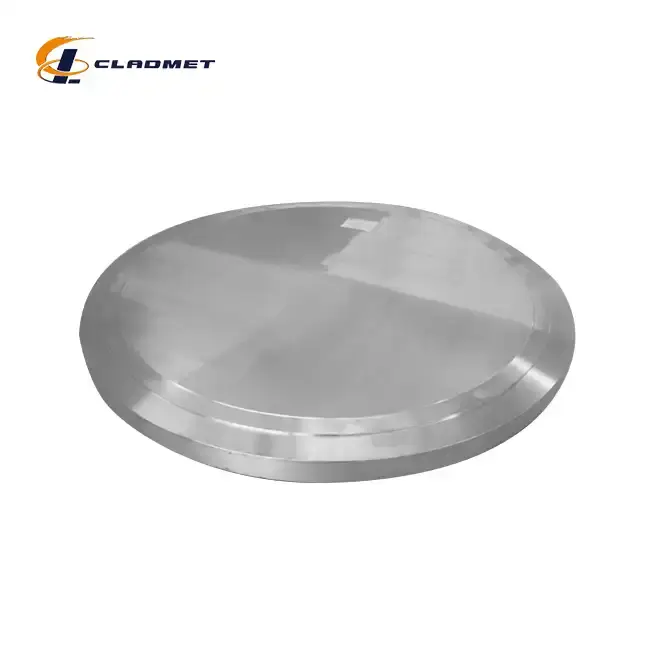
Cost-Effective Manufacturing Solution with Long-Term Economic Benefits
Reduced Material Costs Through Optimized Layer Thickness
The economic advantages of explosive bonding in clad steel sheet manufacturing extend far beyond the initial production costs, offering significant long-term value through optimized material utilization and extended service life. Traditional solid construction using expensive corrosion-resistant alloys throughout the entire thickness is often prohibitively expensive for large-scale applications. Explosive bonding enables manufacturers to use a thin layer of expensive cladding material over a cost-effective base steel substrate, achieving the same performance characteristics at a fraction of the cost. The precise control over cladding thickness, typically ranging from 1mm to 20mm depending on application requirements, allows engineers to optimize material usage while maintaining necessary corrosion resistance and mechanical properties. This optimization is particularly valuable in industries such as chemical processing and marine engineering, where large surface areas must be protected from corrosive environments. The ability to specify exact thickness ratios ensures that material costs are minimized without compromising performance, making explosively bonded clad steel sheets an economically attractive solution for projects ranging from small-scale equipment to massive industrial installations. Advanced thickness control also enables manufacturers to meet specific design requirements while staying within budget constraints, providing flexibility that is essential for competitive manufacturing.
Extended Equipment Service Life Reduces Maintenance Costs
The superior durability of explosively bonded clad steel sheets translates directly into reduced maintenance costs and extended equipment service life, providing substantial economic benefits over the product lifecycle. The molecular-level bonding achieved through explosive processes creates a composite material that maintains its protective properties even under severe operating conditions, eliminating the need for frequent repairs or replacements that are common with conventional materials. Field experience has consistently demonstrated that equipment manufactured with explosively bonded clad steel sheets can operate for decades without significant degradation, even in highly corrosive environments such as chemical plants, offshore platforms, and marine applications. This extended service life results from the permanent nature of the explosive bond, which cannot be compromised by thermal cycling, mechanical stress, or chemical attack under normal operating conditions. The reduction in maintenance requirements also minimizes operational downtime, which can be extremely costly in continuous process industries. Additionally, the reliability of explosively bonded clad steel sheets reduces the need for spare parts inventory and emergency repairs, further contributing to overall cost savings. The combination of extended service life and reduced maintenance requirements makes explosive bonding an economically superior choice for long-term industrial applications.
Scalable Production Capabilities for Large-Scale Projects
The explosive bonding process for clad steel sheets offers exceptional scalability, enabling manufacturers to produce materials for projects ranging from small specialty components to massive industrial installations. Modern explosive bonding facilities can accommodate sheet sizes up to 4000mm in width and 12000mm in length, making it possible to produce large panels that minimize the number of joints and connections required in final construction. This scalability advantage is particularly important for industries such as petrochemical processing, where large vessels and tanks require continuous cladding coverage for optimal corrosion protection. The ability to produce large clad steel sheets through explosive bonding also reduces fabrication costs by minimizing welding requirements and associated quality control procedures. Furthermore, the process can be efficiently scaled for high-volume production runs, with modern facilities capable of producing hundreds of tons of clad steel sheets per month while maintaining consistent quality standards. This production capacity scalability enables manufacturers to meet demanding project schedules while maintaining competitive pricing, making explosively bonded clad steel sheets an attractive option for large-scale industrial projects. The combination of large sheet sizes and high production volumes also provides flexibility for project planning and inventory management, allowing customers to optimize their supply chain and reduce overall project costs.
Conclusion
Explosive bonding has fundamentally transformed the manufacturing of clad steel sheets by providing unprecedented bond strength, superior corrosion resistance, and exceptional mechanical properties that exceed traditional manufacturing methods. This revolutionary technique creates molecular-level fusion between dissimilar metals, resulting in composite materials that combine the structural integrity of base steel with the specialized properties of cladding layers. The process offers remarkable versatility in material combinations, precise thickness control, and scalable production capabilities, making it an economically attractive solution for industries requiring high-performance materials. The long-term economic benefits, including extended service life and reduced maintenance costs, make explosively bonded clad steel sheets an investment in reliability and performance excellence.
Ready to experience the game-changing advantages of explosive bonding technology for your next project? Our team of metallurgical experts at Baoji JL Clad Metals Materials Co., Ltd. is prepared to provide customized solutions that meet your specific requirements. With our independent explosive composite technology, international certifications including ISO9001-2000, PED, and ABS qualifications, and comprehensive OEM/ODM services, we deliver innovative products that set new industry standards. Our commitment to technological superiority, extensive R&D capabilities, and proven track record of global sales make us your ideal partner for advanced clad steel sheet solutions. Contact us today to discuss your project requirements and discover how our explosive bonding expertise can transform your manufacturing capabilities. Contact us: sales@cladmet.com.
References
1. Blazynski, T.Z., "Explosive Welding, Forming and Compaction," Applied Science Publishers, London, 1983.
2. Crossland, B., "Explosive Welding of Metals and Its Application," Oxford University Press, New York, 1982.
3. Hokamoto, K., Vesenjak, M., and Ren, Z., "Explosive Welding and Its Applications in Manufacturing Composite Materials," Materials Science and Engineering, Vol. 465, 2007.
4. Pershin, V., Leshchynsky, V., and Zhukov, A., "Explosive Bonding Technology for Manufacturing Clad Metal Plates," Welding International, Vol. 28, No. 4, 2014.

_1737007724117.webp)
_1736996330512.webp)
